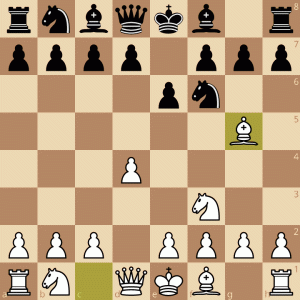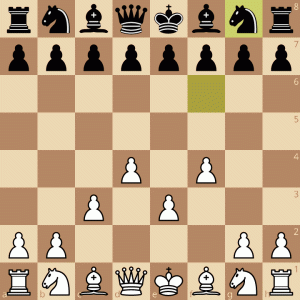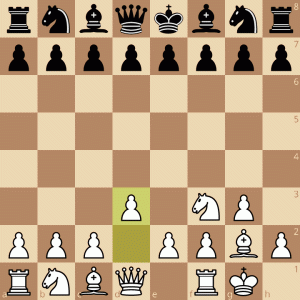The opening is an intriguing stage of the game: With so many possibilities, we can often get lost in choosing what to play. Do I play a Sicilian? Or a Caro-Kann? Have you ever felt like that? It’s a very common question for most players, and today we’re going to make a list of the best openings for beginner players, which are extremely easy to learn, which after reading this article you’ll be able to put into practice right away!
But first, the essentials:
All of the openings that this article will suggest are focused on the classic opening principles, which are basic ideas that all reasonably good openings follow:
- Control the center;
- Develop the pieces;
- Put the king to safety;
Another point worth mentioning is that the lines of this article will focus more on ideas and do not require much knowledge of theory, which will allow you to focus on other areas of your game. That said, let’s get started! And since this article is in English, it’s only fair to start with:
Openings for white (without 1.e4)
English Opening
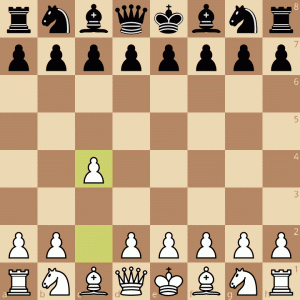
The English opening starts with move 1.c4: White’s idea is to control the d5 square, being able to continue with typical moves like Nc3-g3-Bg2. There is a very easy way to play as White, as they can choose to play a formation of pieces known as Botvinnik’s Triangle against most of Black’s options:
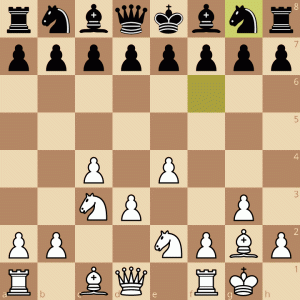
White’s development has a lot to do with the basic idea of English: Controlling the d5 square firmly and having a solid base in the center. If you want to better understand these structures, Mikhail Botvinnik himself has great matches.
As a recommendation, The Dynamic English by GM Anthony Konsten is a very good book on English. Konsten was born in the capital of England, and do you remember which one?
London System
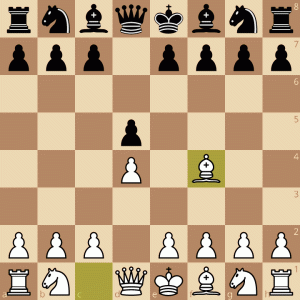
This is the London System: White seeks to develop the pieces calmly and seeks to play with Nf3-e3-Bd3-O-O, looking for a position similar to this:
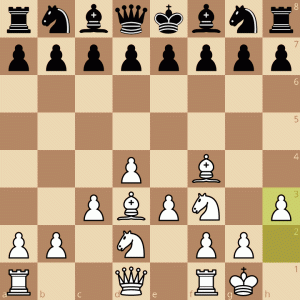
And as a reading recommendation, we at Chesslance have a complete article about the London System! Once, I wanted to play my beloved London system, but unfortunately, I made a mouse slip and ended up playing something else…
Torre Attack
It can be considered a more aggressive version of a London System, as White puts more pressure on the center. But the general idea is very similar to the London System, looking for a position with e3-Bd3-Nbd2, for example:
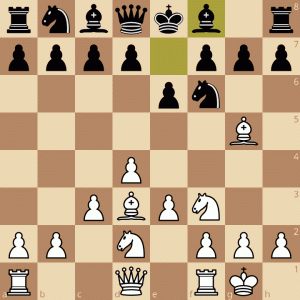
The person who named this opening (Mexican Carlos Torre)won a memorable game against the world champion Emanuel Lasker. But let’s say you’re not too keen on getting your Bishop out of the pawn chain, what can you do? Well, we have another system for you:
Colle System
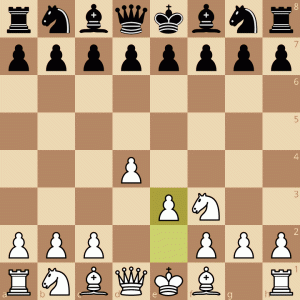
The idea of the Colle System is just to quickly develop the kingside. White normally opts to play with Bd3-0-0, looking for a position similar to this:

Another version of this system is known as the Colle-Zukertort System, where White doesn’t play with c3, but with b3-Bb2, for example:
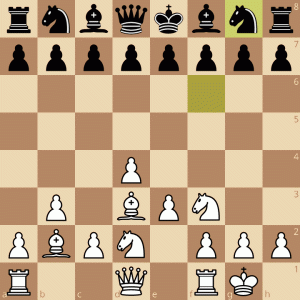
This system bears a great deal of similarity to the Queen’s Gambit Declined (when played as Black), so some ideas in Colle can be used in reverse colors. But do you know what all these systems have in common? There is a typical idea, where White plays with Ne5-f4, leading to a structure known as:
Stonewall Attack
This structure is very typical: White controls the center firmly and has a very strong square on e5, which he can use for a Knight and try to support attack ideas on the kingside, with a position similar to this:

And White can follow through with Rf3-Rh3-g4 ideas, with a ferocious kingside attack. But is it possible to use this formation of pieces with black?
Openings for black
Stonewall Defense
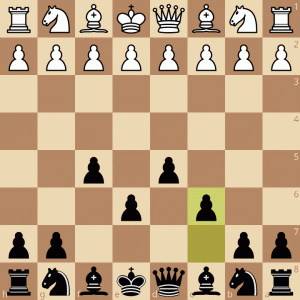
This position normally comes from the Dutch Defense (1.d4 f5). As the pawn structure is identical to the Stonewall Attack, the plans are the same: Black seeks to have a firm grip on the center, especially the e4 square, and will try to attack the kingside, with a position similar to this:
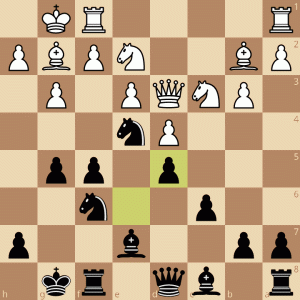
Interestingly, this position is from the Bronstein-Botvinnik game of the 1951 world championship match. So if a world champion used it in a match, why couldn’t you? Speaking of world champions who have already played for Stonewall, Magnus Carlsen is among them, he has already won great games in this defense. And do you remember what his country of origin is?
Scandinavian Defense
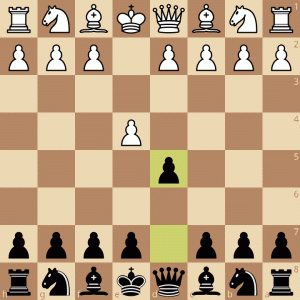
Probably the one with the worst reputation on this list, but it has an advantage over the others: It is the defense that gives White fewer options, since move 2.exd5 is the best move. Black‘s idea is through the center, but without the support of pawns, he has to lose some time to recover this pawn. After 2.exd5 Qxd5 3.Nc3, Black has options like 3…Qa5/Qd6/Qd8, but normally the basic setup is to try to get into a position like this:
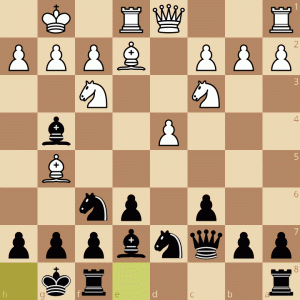
With a pawn structure similar to Caro-Kann and a solid position, this is probably every Scandinavian player’s dream. But you don’t have to play the straight …d5 move! We can prepare with:
French Defense
Black prepares the move …d5, to have the option of recapturing with the pawn instead of the Queen (if we compare it with the Scandinavian). It’s a pretty solid defense, especially if Black plays the option I find most practical, which is the Rubinstein Variation:

It’s the most practical because normally White continues with 2.d4 d5 3.Nc3/Nd2, and against these two moves, Black can respond with 3…dxe4, which saves us time. Black prepares …Ngf6, and will continue with …Be7-…0-0 and try to prepare the move …c5.
As we’ve seen so far, there’s nothing for White after move 1.e4: So let’s fix that right away.
Openings with 1.e4
Four Knight´s Game
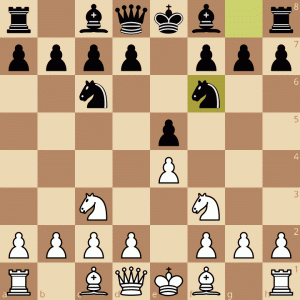
The easiest opening to play against 1…e5. Both sides do the basics: They develop their pieces by attacking the center. White has a few options, among them the main 4.d4 and 4.Bb5. For example, a typical position that appears on the line with 4.d4:
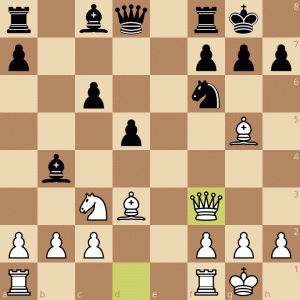
White has a superior structure and might break Black’s structure even further with the Bxf6 move at some point. The position is very solid and with a clear plan: Try to take advantage of Black’s weakened structure. Good, but what can we do if Black answers our 1.e4 with another defense?
King’s Indian Attack
Our last recommendation: A universal system that can be played against anything. The order of moves doesn’t matter much, but in general White plays Nf3-g3-Bg2-O-O-d3-Nbd2-e4, in some order. White develops the kingside and gets his king to safety before deciding where to place the central pawns. A very typical position is as follows:

White seeks to attack the kingside, and Black on the queenside. This is a very famous game between Fischer-Myagmarsuren, which serves as a model for how to play the King’s Indian Attack.
Openings | Conclusion
The choice of openings is a matter of personal taste. But I believe that these more practical options, which do not require as much study, can be used at this first moment, since for the beginner what will decide the game is not the openings, but the other areas of the game. Maybe you also want to see the top 5 Gambits? I hope that you enjoyed it!
